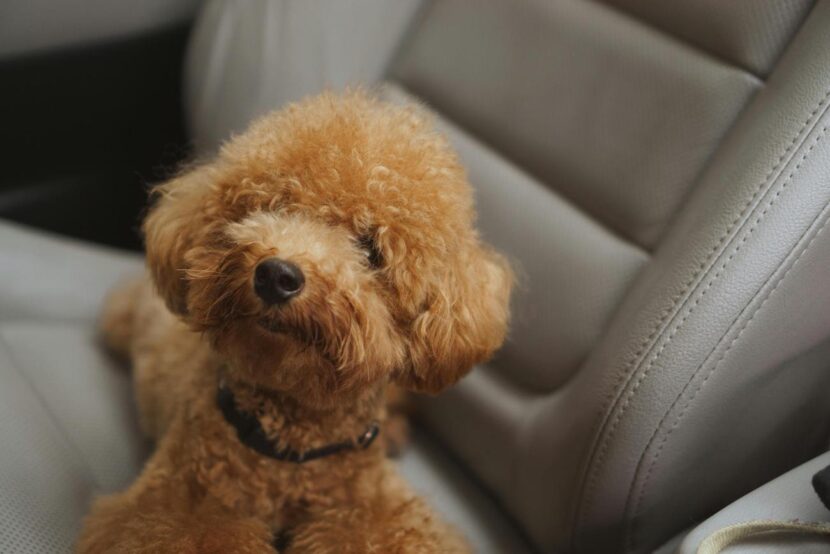Pet Airline Expert Reveals 6 Things You Should Know Before Flying Pets In-Cabin
As airlines worldwide broaden their pets-in-cabin programs, more travellers are looking to bring their four-legged companions along for the ride — not just to the park, but across continents and into some of the most luxurious pet-friendly hotels. But while the setup sounds blissfully straightforward — pet, carrier, window seat, wheels up — experts caution that in-cabin pet travel is far from a grab-and-go experience. It requires thoughtful preparation, a realistic read on your animal’s health and temperament, and an understanding of how they’ll cope with the sensory overload of modern air travel.
According to Joanna Maddison, founder of international pet travel agency SKYE PETS, many owners are enthusiastic but unclear on what safe in-cabin travel truly requires. She says pet aviation is evolving quickly and that “pet air travel enters a new era in Australia, the change is welcome, but owners must understand what’s really required to make it safe. With proper preparation and calm, confident handling, in-cabin travel can be a game changer for pet wellbeing.”
Here are the six key questions Maddison recommends every traveller ask before booking a cabin spot for their pet — whether they’re flying across a country or across a continent.
1. Does Your Pet Need a Veterinary ‘Fit to Fly’ Certificate?
Maddison notes that certain physical signs — such as heavy snoring, constant panting or overheating — can indicate that a pet may struggle in the air. She explains that “pets that snore heavily, pant constantly, or overheat easily may have airway issues that make air travel unsafe,” adding that elderly animals or those with heart, respiratory or mobility concerns may also tire more easily or become disoriented.
Depending on the airline or route, a health certificate may be required. Maddison says that “in some cases, a pre-flight veterinary ‘fit to fly’ certificate may also be required to confirm that your pet is healthy enough to travel safely.”
2. Does Your Breed Require Extra Consideration?
Snub-nosed or brachycephalic breeds — including Bulldogs, Pugs and Persian cats — are particularly sensitive to warmth, stress and limited airflow. Maddison explains that “brachycephalic breeds are generally more sensitive to air travel” because of their shortened airways.
Even on temperature-controlled aircraft, these pets need monitoring, as “dogs cool themselves primarily through panting, and snub-nosed breeds are less efficient at this. Maintaining airflow and hydration is vital to prevent overheating.”
3. Are You Prepared for Pet Jet Lag?
Time zone changes can confuse pets just as they do humans. Maddison says that “pets can experience jet lag much like humans… They may feel tired at odd hours, seem restless at night, or lose their appetite briefly. Most adjust within a few days.”
One of her simplest strategies is scent-based reassurance. She advises owners to sleep with their pet’s blanket or toy before travelling so it carries their scent, which “provides comfort and reassurance, especially during take-off and landing.”
4. Have You Timed Pre-Flight Meals Correctly?
According to Maddison, many owners unintentionally create mid-air discomfort by feeding pets too close to departure. She explains that “a full stomach can cause nausea at altitude… Offer the last full meal 6–8 hours before departure to allow digestion and reduce nausea or bloating.” She recommends avoiding food entirely within two hours of takeoff.
Hydration should be monitored as well, since cabin air is notoriously dry. Small amounts of water (where allowed) help prevent fatigue and dryness, particularly on longer routes.
5. Do You Know How to Support an Anxious Flyer?
Some pets react nervously to noise, motion or new environments. Maddison stresses the importance of early preparation, saying that “preparing your pet early, through crate familiarisation, bringing along familiar bedding, and staying calm yourself, can make a big difference to their comfort.”
She also notes the emotional connection between pets and owners: “Pets mirror their owners’ emotions… Your energy directly influences theirs.”
6. Have You Packed the Right Essentials?
Long-haul or multi-leg flights require smart packing. Maddison points out that “absorbent pads, thick quilted liners, and multi-purpose bedding make a huge difference… They help with comfort, hygiene, and temperature regulation.”
Globally experienced pet travellers also carry:
-
A collapsible water bowl for quick hydration at any airport.
-
A backup leash, ID tag and physical photo in case of unexpected terminal chaos.
-
Printed veterinary documents, as many immigration desks still favour paper over digital files.
The Takeaway
With more airlines embracing pets in the cabin, travelling with animals is becoming increasingly accessible. Yet experts emphasise that successful pet travel hinges on preparation, realistic expectations and an understanding of your companion’s needs.
With the right planning — and a calm, confident approach — pets can fly not just safely, but comfortably, wherever in the world their humans are headed.





